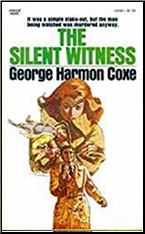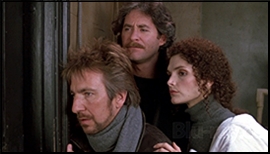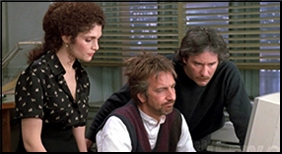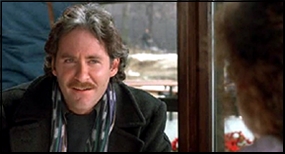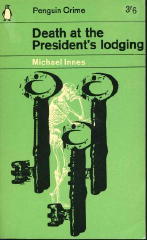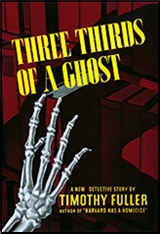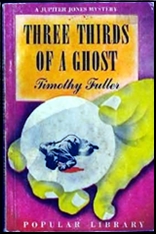$500 and a Dream
at the Manhattan County Clerk’s Office:
A Review of Author Kevin Egan’s Latest Courthouse Story
by Gilbert Colon
KEVIN EGAN “The Movie Lover.” Alfred Hitchcock Mystery Magazine, July-August 2018.
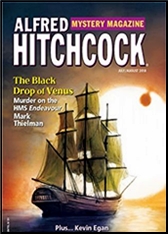
Kevin Egan returns to the pages of Alfred Hitchcock Mystery Magazine, contributing the eleventh story in his courthouse series, “The Movie Lover.†The July-August 2018 issue, on newsstands now, is devoted to film-themed fiction, so Egan makes his key character Nouri, sighted helper to the blind manager of the court’s lobby concession, an aspiring screenwriter.
The most prominent feature of these tales is the iconic and historic courthouse building at 60 Centre Street, long famous even before being immortalized in the opening credits of the long-running television series Law & Order. Egan has used it as the location for all but one of his Alfred Hitchcock Mystery Magazine stories to date.
The series also features a recurring character, the enigmatic court officer Foxx. While the judges of the New York State Unified Court System balance the scales of justice, Foxx personally keeps them balanced in-house by anonymously operating in the building’s shadowy spaces and corners.
Enlisting Foxx is Ray Dempsey, the crusty concessionaire of the on-site coffee shop serving the public through the New York State Commission for the Blind. Dempsey suspects someone in his employ is embezzling from the register of one of his stations. Foxx intimately knows the lay of the land, making his beat the circular court corridors that lead to the “dark, nameless door[s]†behind which lie secret rooms – or at least forgotten ones – that hold secrets only Foxx seems to know about.
From a high vantage point above the fourth-floor pastry-and-coffee table Nouri tends, eagle-eyed Foxx spies “a quarter view sight line behind Nouri [and] watch[s] the money change hands, then retreat[s] around the back of the circle.†From here he can see “the way the cash is arranged in the till†and observe every transaction unnoticed…
In no time, Nouri becomes the focus of Foxx’s investigation. Nouri’s background as a Middle-Eastern American, along with his housemates’, gives the story the opportunity to present the experience of regular immigrants in the early stages of assimilation, a normalized depiction not unlike that of the more established and even more ordinary Pakistani-American family in the 2016 HBO crime series The Night Of, scripted by crime author Richard Price (Clockers, Freedomland, five episodes of The Wire).
Nouri is also the movie lover of the title, a would-be writer desperate – too desperate – to sell a Hollywood blockbuster script and hit it big. By day he works his job, learning dialogue by hearing everyday customer interactions that “no writing teacher or voice coach†could impart, artistically inspired by the courthouse every time he “walk[ed] up those front steps,†“carv[ing]out…quiet hours [to] write in his notebook†– “the hothouse for all his ideas.†(It bears noting that “The Movie Lover,†and all the stories of the courthouse series, are written by a man who works as a senior settlement coordinator in the same building – these lines could be Egan writing about himself.) By night Nouri types away on his “dilapidated laptop,†“hearing the dialog in his head and visualizing the camera angles with his mind’s eye†as he daydreams about his screenplays becoming “beautiful movie[s].â€
There, in those moments, and also on the terrazzo floor where he crouches in his downtime to scribble his inspirations, he lives inside his head creating, but he is also hopelessly over his head in trouble. The constant presence of production companies shooting big and small screen dramas that use the court interiors and exteriors as a backdrop, the production trailers and huge booms and cameras and film crews and PAs “wearing identical black tee shirts emblazoned with the name of the movie†only fuel what his realist roommate Asif regards as Nouri’s cockeyed delusions. There is a subtle contrast to be made here between the wide-eyed Nouri and his cynical blind boss Dempsey.
Nouri’s innocent dreaming will leave readers dying to know the content of the “beautiful movie[s]†– ten screenplays in total – that he has recklessly sacrificed so much for, but alas the movie scripts remain a mystery, perhaps a casualty of the lean, clean short mystery story format. Perhaps these kinds of short fiction constraints are what led Egan to expand his Alfred Hitchcock Mystery Magazine stories “Midnight†and “A Small Circle†into, respectively, the Centre Street courthouse novels Midnight and A Shattered Circle. The efficient crime narrative delivers the requisite resolution, action, and catharsis by the end, all in one fell swoop. But because Egan never overlooks the emotional notes, there is also bittersweet light and hope in the epilogue, qualities generally in short supply in the dark and jaded world of the crime genre.
Besides being a solid and satisfying piece of crime fiction, “The Movie Lover†is a loving reminder of the glamorous Hollywood history surrounding the New York County Courthouse, storied in more than one sense of the word. Nouri wistfully reminds us of the many movies, some recent and others classic, that have filmed at the celebrated courthouse: “When I walk up those front steps, I see Charlie Sheen climbing to meet his fate at the end of Wall Street. When I wait for the elevator, I gaze up at the same WPA mural that loomed above Matt Damon in The Adjustment Bureau. When I get off the elevator, I pass the courtroom where John Payne proved Edmund Gwenn to be Santa Claus in Miracle on 34th Street.†Of course there are so many others – 12 Angry Men, The Godfather, and Carlito’s Way, to name a few – too many to list, in fact.
In this way, “The Movie Lover†lets its readers appreciate anew the old building and its rich history which court staff, jurors, lawyers, litigants, and the general public take for granted, all through the “dreamy eyes†of Nouri, a starry-eyed romantic who, despite his many flaws, helps us to see it freshly as the thing of wonderment it is.
FIN
Other film-themed stories in Alfred Hitchcock Mystery Magazine’s July/August “Lights! Camera! Murder!†issue, include Robert S. Levinson’s “Nine Years Later†(set during the filming of a Hollywood gangster picture) and Rebecca Cantrell’s “Homework†(a jewelry heist caper involving acting).
* * *
KEVIN EGAN’s latest novel, A Shattered Circle, earned an early Publishers Weekly review hailing it as “his best to date.†He has authored eight novels and numerous short stories, many published in Alfred Hitchcock Mystery Magazine, not to mention an upcoming one in Ellery Queen Mystery Magazine. Visit him at www.kjeganfiction.com.
* * *
GILBERT COLON has written for several print and online publications, including Filmfax, Cinema Retro, Crimespree, Crime Factory, and Strand Mystery Magazine. He is a contributor-at-large for both the St. Martin’s Press newsletter Tor.com and the Alfred Hitchcock Presents-heavy bare•bones e-zine. You may reach him at gcolon777@gmail.com.
